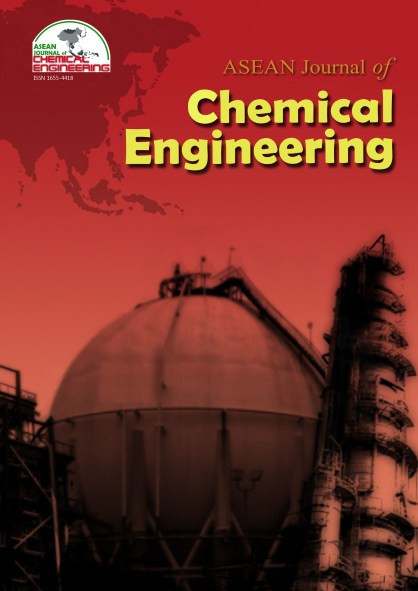Alcoholysis of Nyamplung Seed Oil Using Potassium Carbonate Catalyst
Abstract
The production of glycerol and ester by alcoholysis of vegetable oils has been widely studied. Various catalysts, such as sodium and potassium hydroxide and sulfuric acid have been used to increase the rate of reaction. This preliminary research studied the possibility of using potassium carbonate catalyst. The experiment was conducted in an autoclave. A certain amount of nyamplung seed oil was poured into the autoclave and then the heater was switched on to heat up the oil to the required temperature of reaction. Besides, a mixture of ethanol and potassium carbonate was heated in a flask equipped with condenser to form ethanolate. As soon as the required temperature was reached, the ethanolate was quickly put into the autoclave containing the nyamplung seed oil. The temperature of the reaction was kept constant for a period of time. At the end of each process, a sample was withdrawn and analyzed for its glycerine content by acetin method. The variables studied were reaction time and catalyst concentration. The experimental data were evaluated by applying pseudo homogeneous approach. It was found that data were in good agreement with first order reaction with respect to nyamplung seed oil. Using an equivalent ratio of 5.1 ethanol to nyamplung seed oil, a temperature of lOOoC,and an agitation speed of 150 rpm, the favorable catalyst concentration was found to be at 0.008 gram of potassium carbonate per gram of nyamplung seed oil. Under this condition, the glyceride conversion was 0.5159 in 75 min.References
2. Freedman, 8., Pryde, E. H., and Mount,T.L. (1984). "Variables affecting the yields of fatty ester from transesterified vegetable oils,"JAOCS, 61, 1638-1642.
3. Griffin,R. C. (1927). Technicalmethods of analysis, McGraw-HillBOOkCo., Inc., New Y01K.
4. Groggins, P.H. (1958). Unitprocesses in organic synthesis, McGraw-Hill, New York.
5. Kirk, R. E., and Othmer, D. F. (1980). Encyc/opedia of chemical technology, John Wiley and Sons, New York.
6. Puppung, P.L. (1986). "Penggunaan minyak kelapa sebagai bahan bakar motor diesel," Lembaran Publikasi Lemigas, 1, 29-35.
7. Senosastroamodjojo, A. (1967). Obat AsH Indonesia, Chususnya dari pada Tumbuh-tumbuhan jang Terdapat di Indonesia, Dian Rakjat, Djakarta. Sofiyah. (1988). Alkoholisis minyak biji nyamplung memakai katalisator natrium hidroksid dan kalium hidroksid,Laporan Penelitian DPP- SPp, Fakultas Teknik UGM, Yogyakarta. www.aromatrading.co.uk
Copyright holder for articles is ASEAN Journal of Chemical Engineering. Articles published in ASEAN J. Chem. Eng. are distributed under a Creative Commons Attribution-NonCommercial 4.0 International (CC BY-NC 4.0) license.
Authors agree to transfer all copyright rights in and to the above work to the ASEAN Journal of Chemical Engineering Editorial Board so that the Editorial Board shall have the right to publish the work for non-profit use in any media or form. In return, authors retain: (1) all proprietary rights other than copyright; (2) re-use of all or part of the above paper in their other work; (3) right to reproduce or authorize others to reproduce the above paper for authors’ personal use or for company use if the source and the journal copyright notice is indicated, and if the reproduction is not made for the purpose of sale.



